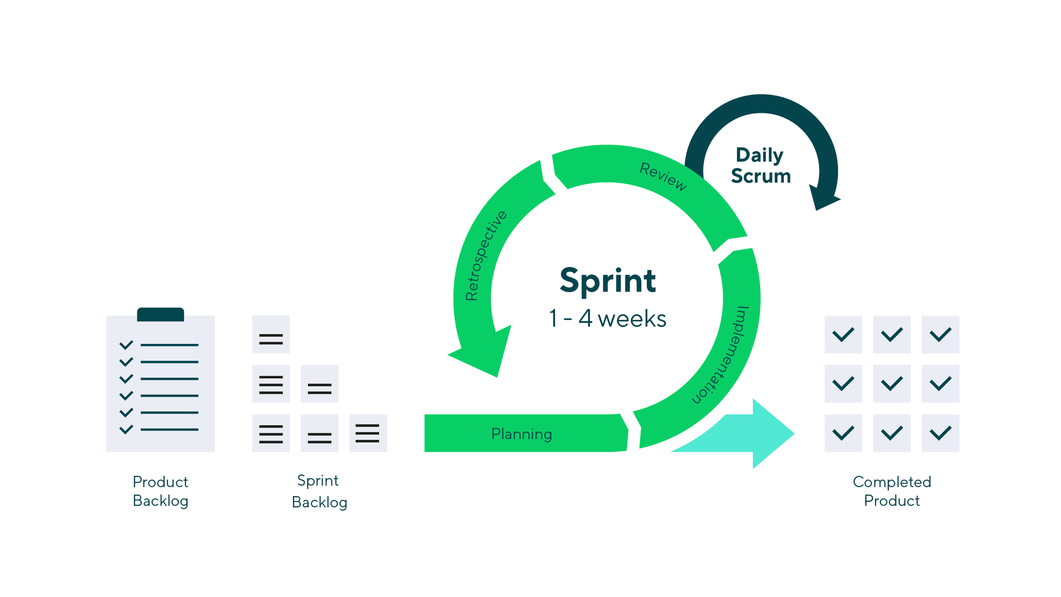2 min to read
What is Scrum?
Why is so important to use?

Agile Scrum
Agile Scrum is a widely used framework for Agile software development. It is a structured, iterative approach to project management and product development that promotes collaboration, transparency, and adaptability among cross-functional teams. Agile Scrum is particularly well-suited for complex projects where requirements may change or evolve over time.
Key Components and Concepts of Agile Scrum
-
Scrum Teams: In Agile Scrum, work is organized and executed by small, cross-functional teams called Scrum Teams. These teams typically consist of developers, testers, designers, and other necessary roles.
-
Product Owner: The Product Owner is responsible for defining and prioritizing the features and user stories in the product backlog. They act as the voice of the customer and make decisions about what should be built.
-
Scrum Master: The Scrum Master is a servant-leader for the Scrum Team. They facilitate the Scrum process, remove impediments, and ensure that the team adheres to Scrum principles and practices.
-
Product Backlog: The Product Backlog is a prioritized list of all the features, enhancements, and bug fixes that need to be addressed in the project. It’s dynamic and can change as new information becomes available.
-
Sprint: A Sprint is a fixed time period (usually 2-4 weeks) during which a Scrum Team works on a set of items from the product backlog. Sprints provide a time-boxed approach to development, making it easier to manage and control the work.
-
Sprint Planning: At the start of each Sprint, the Scrum Team conducts a Sprint Planning meeting. During this meeting, they select a set of items from the product backlog that they commit to completing within the Sprint.
-
Daily Standup (Daily Scrum): The Daily Standup is a short, daily meeting where team members provide updates on their progress, discuss any impediments, and plan their work for the day.
-
Sprint Review: At the end of a Sprint, the team holds a Sprint Review meeting to demonstrate the work completed during the Sprint to stakeholders and gather feedback.
-
Sprint Retrospective: Following the Sprint Review, the team conducts a Sprint Retrospective to reflect on what went well, what could be improved, and how to make adjustments for the next Sprint.
-
Incremental Development: Agile Scrum promotes incremental development, meaning that at the end of each Sprint, there should be a potentially shippable product increment.
-
Self-Organizing Teams: Scrum Teams are expected to be self-organizing, meaning they have the autonomy to decide how to best achieve their goals within the framework.
-
Continuous Improvement: Agile Scrum encourages teams to continuously improve their processes and outcomes based on feedback and experience.
Agile Scrum is highly adaptable and can be used in various industries and types of projects, not limited to software development. It emphasizes customer collaboration, responding to change, and delivering value early and frequently. By breaking work into small, manageable iterations and fostering close collaboration among team members, Scrum aims to improve product quality and increase customer satisfaction.
Comments